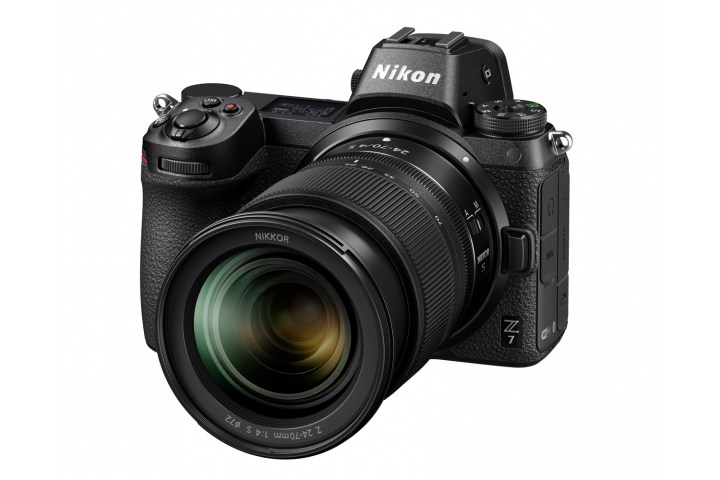
After celebrating its 100th anniversary in 2017, Nikon is starting a new chapter with the introduction of its Z-series cameras, the Z7 and Z6. The full-frame models represent Nikon’s big push into the mirrorless category, which has been hotly anticipated for some time.
The Z7 and Z6 are nearly identical cameras with full-frame sensors. The big difference is the resolution: the Z7 has a 45.7-megapixel back-illuminated sensor with the optical low-pass filter removed, while the Z6 has a 24.5-megapixel sensor with an OLPF — you could call it the Z7’s baby brother.
Another big thing that separates the two is price: the Z6 has a more consumer-friendly price of $2,000 (body only), putting it in competition with Sony’s A7 III, while the Z7 is priced at $3,400 (body only). The Z7 would be aimed at professionals, particularly existing Nikon owners looking to move into mirrorless.
The Z7 could be considered the mirrorless version of the highly lauded D850 DSLR. Both have a similar sensor, and share common features. The sensor, along with the newly introduced Expeed 6 image processor, is newly developed. The Z7 also has equal build quality and similar ergonomics to the D850 with weather sealing, but in a more compact body.
Not surprisingly, Nikon has also introduced a new lens mount, the Z-mount. Z-series cameras will support Nikon’s entire lineup of F-mount Nikkor DSLR lenses via an adapter, but the new Z-mount isn’t just about accommodating the smaller mirrorless form factor — it actually has a wider diameter, allowing for lenses with super fast f/0.95 apertures, something that simply isn’t possible on the F-mount. It also has a 16mm flange focal system, the shortest possible to make the camera compact without compromising performance.

During the official launch event in Tokyo, on August 23, Hiroyuki Ikegami, the corporate vice president and sector manager of Development Sector, Imaging Business Unit at Nikon Corporation, described the new lenses as the “embodiment of Nikon quality and brings value to the mirrorless market,” and said they demonstrate a very high level of performance. With the Z-series cameras, Ikegami said users benefit from a wide variety of lenses (including the F-mount lenses), high resolving power, and features for movie making.
What is more surprising is how serious Nikon has gotten about video on both Z cameras, which shoot 4K with full pixel readout and even offer the new N-Log logarithmic tone curve and 10-bit color for better dynamic range. The cameras are also Nikon’s first interchangeable lens models with built-in image stabilization.
The new mirrorless cameras aren’t signaling a complete shift away from DSLRs, however. Nikon says it will continue to advance both platforms, with new DSLRs and F-mount Nikkor lenses to come (one such product is the AF-S Nikkor 500mm f/5.6E PF VR). But the entry into mirrorless means Nikon finally believes the category has legs; it’s a crowded one that’s dominated by Sony, as well as Fujifilm, Olympus, and Panasonic, but Nikon does have a compelling product now. (Nikon had a previous mirrorless series, called the Nikon 1, that had some success with casual consumers, but the Z-series is a true effort at building a high-end mirrorless system.) It will be interesting to see where Nikon goes from here.
In addition to the Z cameras and the new lens, Nikon also announced a dot sight accessory designed to help with tracking moving subjects when using long telephoto lenses. It’s built with the new P1000 in mind, which has a staggering 125x zoom, but it will work on any camera with a standard hot shoe.
Read our review of the Z7.
This article was originally published on August 23. It was updated on November 14 to include the availability of the Z6.
Editors' Recommendations
- New Nikon camera gear for space station marks end of an era
- The best full-frame cameras
- Smaller and cheaper, the full-frame Lumix S5 is exactly what Panasonic needed
- Canon EOS R5 vs. Sony A7S III vs. Panasonic S1H: Best full-frame for video?
- Should you buy the Canon EOS R5 or EOS R6? The new mirrorless options compared


